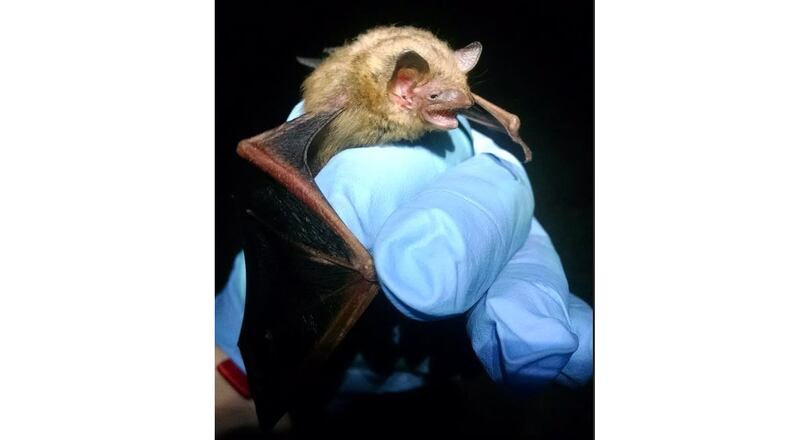Georgia has 16 native bat species, and 10 of them now face declining numbers so serious that state wildlife biologists likely will make them high priorities for conservation measures.
The main reason is a fatal, fast-spreading disease among bats called white-nose syndrome, which is decimating bat populations in eastern North America. The epidemic, which first appeared in Georgia in 2013, has caused an alarming 90% or more decline in the number of bats in North Georgia’s caves, says the state Department of Natural Resources in its latest Georgia Wild E-Newsletter.
One species, the northern long-eared bat, seems to have disappeared from Georgia altogether because of the disease. The bat once was found in caves and forests across North Georgia, but it hasn’t been seen since 2017. “The northern long-eared is one we’ve pretty much lost in the state,” said Katrina Morris, a DNR senior wildlife biologist. Last month, the species was listed as endangered under the federal Endangered Species Act.
Another once-common Georgia species, the tricolored bat (formerly known as the Eastern pipistrelle), may be headed that way. Populations of the tricolored, Georgia’s smallest bat species, have shrunk so much that federal wildlife officials also propose listing it as endangered.
In Georgia, high-priority species are those that rank highest for conservation efforts under the State Wildlife Action Plan. The plan is a statewide strategy to help conserve populations of troubled native plant and animal species before their survival becomes seriously jeopardized.
Georgia’s bat woes, however, reflect a scary outlook for bats across North America. This month, in its first “State of the Bats Report,” the North American Bat Conservation Alliance said that more than half of the continent’s 154 bat species are at risk of severe population decline.
In addition to white-nose syndrome, other threats are mortality due to wind turbines, loss of habitat and climate change. To see the report, visit batcon.org/press/2023-north-american-state-of-the-bats-report/.
IN THE SKY: From David Dundee, Tellus Science Museum astronomer: The moon will be full on Friday (May 5) — the “Planting Moon.” Mercury (low) and Venus are in the west just after sunset. Mars is high in the southwest at dark. Saturn is low in the east just before sunrise.
Charles Seabrook can be reached at charles.seabrook@yahoo.com.
About the Author
Keep Reading
The Latest
Featured


